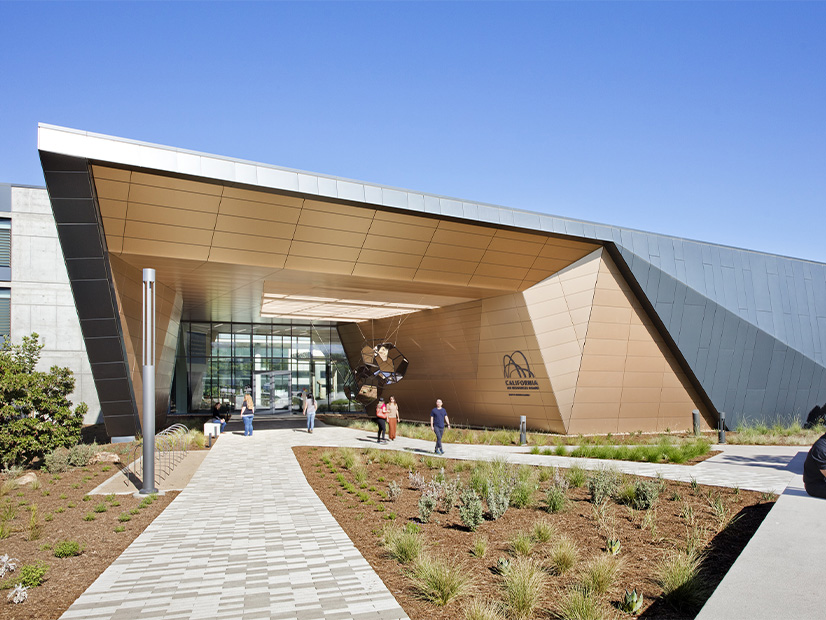The California Air Resources Board’s draft climate change scoping plan — and its proposal for the state to reach carbon neutrality by 2045 — is facing criticism from many directions.
In a letter submitted to CARB last week, a group of 73 environmental organizations said the plan would fail to meet the state’s greenhouse gas reduction requirements by 2030, as well as the 2045 carbon neutrality target.
Instead, the plan “relies on record-breaking levels of unspecified mitigation from the cap-and-trade program in 2030 and entirely unrealistic levels of direct air capture in 2045,” the groups wrote.
“This is not a serious climate plan for California,” they said.
The letter’s signatories include representatives of the Sierra Club, Earthjustice, California Democratic Party Environmental Caucus, and the Center on Race, Poverty and the Environment, among others.
Grid Impacts
On the other side of the debate are individuals who question the scoping plan’s push toward electrification — and the impacts that would have on the electric grid.
“The state of California does not have safe or reliable power,” wrote Dawn Durfee, who said she lost her home in the Paradise wildfire. Requiring all vehicles to be electric would only make matters worse, she said.
“People do need to run refrigerators, washers, dryers, air conditioners or heaters,” Durfee said in a letter to CARB. “People do not need to drive electric cars.”
In addition, Durfee said, worldwide air quality won’t improve until China and Russia cut their emissions.
“California is not the ruler of the universe!” she wrote.
Other letter writers said they couldn’t afford to buy an electric vehicle, or that an EV wouldn’t be able to tow their trailers. Some pointed to the environmental impact of used EV batteries.
“Forcing electric cars on the population is full of disastrous consequences,” Susan Dwyer said in a letter to CARB.
Public Hearing Scheduled
CARB released the draft climate change scoping plan on May 10, starting a 45-day comment period. (See Draft Plan Seeks Calif. Carbon Neutrality by 2045.)
The CARB board will hold a public hearing on the plan on June 23. Written comments are due by June 24.
The scoping plan evaluates four scenarios. Alternatives 1 and 2 would bring the state to carbon neutrality by 2035. In Alternatives 3 and 4, the state would reach the target 10 years later, in 2045.
CARB staff have proposed going with Alternative 3, which would have the least impact on employment and economic growth among the four options, according to the draft.
In contrast, Alternative 1 would have the highest direct costs and slow economic growth the most, the plan said. That alternative would nearly eliminate fossil fuel combustion by 2035 and would have a limited reliance on carbon capture and sequestration.
Some letter writers called the proposed alternative “too little, too late.”
“Choosing the least expensive option, relying on unproven carbon capture technologies, [and] determining job loss without adding in job creation as the energy sector changes is disheartening,” wrote Meredith Rose. “My kids deserve better — and so [do] everyone else’s kids.”
The letter from the 73 environmental groups makes several policy recommendations, including phasing out fossil fuel extraction by 2035 and refining by 2045. Regarding electric power, the groups called for a ban on new gas-fired generation starting immediately and a target of zero GHG emissions by 2035.
“Fundamentally, the draft scoping plan fails to move California beyond oil and gas,” the groups wrote.
‘Puzzling’ Plan
An editorial in the Los Angeles Times on Friday called the scoping plan’s approach “puzzling” in light of California Gov. Gavin Newsom’s directive to CARB to accelerate climate action. The governor famously referred to the “climate damn emergency” when wildfires swept through the state in 2020.
And in July 2021, Newsom asked CARB to look into how carbon neutrality could be achieved by 2035.
The editorial said the plan would use “unproven technology” to remove “huge amounts” of CO2 from the air as well as capture it from cement plants and oil refineries.
Calling the carbon removal approach a “pie in the sky strategy,” the editorial advised using proven approaches.
“In reality, we already have most of the solutions to the climate crisis right in front of us — electrifying everything we can as quickly as possible and fueling it with clean renewable energy,” the editorial said.

